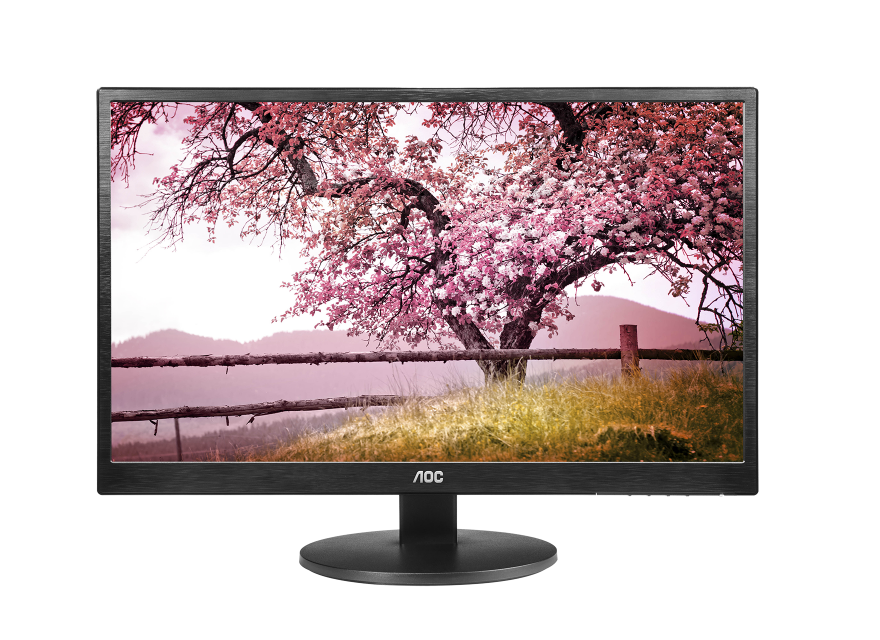AOC's U2870VQE 4K Monitor Available For Just $349
AOC's latest monitor brings 4K to you at a relatively friendly price point, compared to other 4K offerings.
By now, 4K is gaining some serious mainstream traction, but it won't yet make its way to desks the way 1080p monitors have done over the last few years. AOC's new monitor won't make that happen either, though it does come with a very friendly price tag. Meet the AOC U2870VQE, a 4K monitor that comes in at $499 (or less -- more on that in a moment).
The U2870VQE isn't a monitor that comes with a fancy IPS panel and highly-flexible stand; instead, it takes things back to the basics with a simple, high-quality TN panel and a stand that only supports tilting. The panel is 28" on the diagonal and is capable of displaying the 3840 x 2160 pixel resolution at a refresh rate of 60 Hz.
The panel itself is an 8-bit (meaning it can display 16.7 million colors), but the monitor can accept 10-bit signals and will display them using a technique called Temporal Dithering, also referred to as Frame Rate Control. In short, the controller will make the display switch back and forth between two close colors, making you see the color that would be in between, kind of like mixing two different colors of paint.
AOC boasts a 70,000,000:1 contrast ratio, but that's the dynamic contrast ratio with variable backlighting. The static contrast ratio is 1000:1, which is about as standard as one gets on a TN film. Maximum brightness sits at 300 cd/m2, and viewing angles are 170 degrees horizontal and 160 degrees vertical.
Display inputs consist of VGA, DisplayPort, Mini-DisplayPort, and HDMI with MHL support. The monitor does not have any built-in speakers, audio outputs, or USB ports. The display's frame is made of plastic, but it has a neat matte brushed aluminum appearance, and the panel itself is matte, too.
Overall, the one thing to say about the monitor is that it is a straight-to-the-point 4K monitor without any bells and whistles that drive up the price.
MSRP pricing sits at $499, but AOC informed us that the monitor is listed at MicroCenter for the very attractive price of $349.
Get Tom's Hardware's best news and in-depth reviews, straight to your inbox.
Follow Niels Broekhuijsen @NBroekhuijsen. Follow us @tomshardware, on Facebook and on Google+.
Niels Broekhuijsen is a Contributing Writer for Tom's Hardware US. He reviews cases, water cooling and pc builds.
-
wysir 4K wont become mainstream until a better video port becomes available to push beyond the current 60Hz limitReply -
hannibal Well even display port 1.4 has been released, so 1.3 is old stuff... The real problem is to have some GPUs that can push pixels fast enough. The next year and 1x nm production technology with HBM2.0 may do the trick.Reply
http://www.vesa.org/news/vesa-publishes-embedded-displayport-edp-standard-version-1-4a/
-
soldier44 28 inches way too small for 4K. Phillips and a few other brands are starting to push out 40 inch monitors with DP and HDMI 2.0 on them thats perfect for 4K sitting 3-4 feet away from it.Reply -
beetlejuicegr i dont know guys, someone with the mood to make some math could say thatReply
a 27inch with 4k display could look the same as a 1080p with 4x Antialiasing? So if someone wanted to test one vs the other what gpu performance would you need to push the displays?
Dont forget Antialiasing was introduced/use so you won't feel you are seeing ugly lines and realising you are in a digital resolution. So why do many say that 4k is bad on 24 inches? isnt that what antialiasing was used for?
We pit graphic cards vs graphic cards and test them on 4x or even 8x Antialiasing of different AA methods, i am extremely curious to see native very hig resolutions fps performance vs 1080p Antialiased resolutions..
Dont you? -
mforce2 After seeing how the image looks on my current 23 inch fullHD IPS monitor I'm never going back to TN ever again.Reply
I couldn't care less if it's 4K and besides maybe 4K is a bit of an overkill , well for 23-24 inches anyway. -
nikoli707 more precice, 4k wont become popular until at least a single gimped flagship video card can drive the 'then' current aaa popular near top graphically demanding game at 60fps on near ultra settings(no aa).Reply

